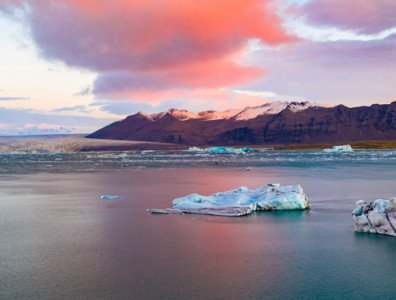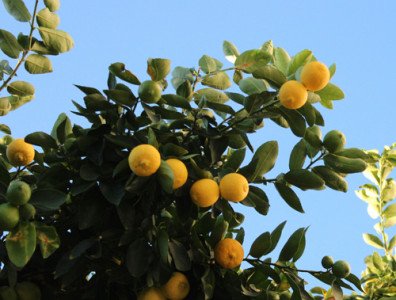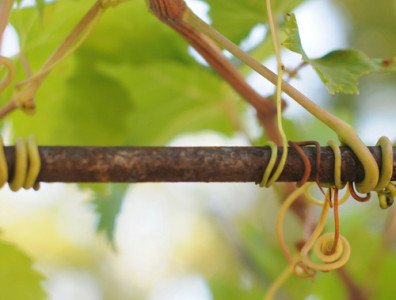The Climate Change Challenge To Agriculture
Seaweed, "Kowbucha" and alternative energy sources are in the mix as New Zealand's agricultural firms seek to reduce greenhouse emissions.
The Climate Change Commission’s plan to make New Zealand carbon neutral by 2050 has certainly been shaking up discussions in the boardrooms of agricultural companies.
“New Zealand is still an agricultural economy to a large extent and if we are going to contribute to the global effort to limit global warming, agriculture will have to be included in our mitigation effort,” says Climate Change Commissioner Dr Harry Clark.
“The bad news is that our agricultural activities are those that give rise to methane, a gas that has a very high impact on the climate. The good news is that to get within the climate goals of the Paris Agreement, carbon dioxide emissions must get to net zero. That doesn’t actually apply to methane.
“Methane is a different gas in the atmosphere. It’s short-lived. It has quite an impact while it’s up there but it doesn’t stay up there that long. So, methane emissions do not necessarily have to go to zero.
“Within the New Zealand legislation, we have a long-lived gas target which has to go to zero. But we have different targets for methane, although these still involve quite stringent reductions: a minimum 10% by 2030 and getting somewhere between 24 and 47% by 2050.
Carbon challenge
Clark notes that the agriculture sector also produces carbon dioxide from many of its activities.
“We have emphasised that emissions have to be reduced in every sector and every activity. That includes transport, electricity generation and industrial processing. A number of these will affect the agricultural sector,” he says.
“But we really believe that efficiency gains will allow reductions in methane of up to around 19% by 2035. Those efficiency gains include the impact of other policies, such as those around fresh water and biodiversity, and land lost to trees.”
“If you take that all together, the Commission feels the sector can be on track to meet the targets set without the use of new technologies. It will be a challenge and the sector will find the challenge hard, but we are confident there are approaches that can get us there.”
The Commission has used technology in its modelling, but this is very much about efficiency rather than new technology.
“It has favourable impacts on the bottom line and means that mitigation can come at no cost or even, in some instances, a better bottom line,” says Clark.
“It would be naive to say there won’t be cost pressures, but the technologies exist so that some of these transitions will, in at least our first three budgets, not impact the bottom line of companies that strongly.”
“The costs of some of the new technologies coming along are also reducing dramatically. For example, as we move more to renewable electricity, the cost of electricity is forecast to come down.”
Clark says there’s a danger that if emissions are not reduced, New Zealand’s image of supplying highly ethically and environmentally produced goods will start to diminish.
“So, in many ways there isn’t a choice around what we have to do. To maintain the integrity and reputation we have, it’s in New Zealand’s interests to really embrace the concept of low emissions products. Yes, it may be difficult or a bit painful, but it’s probably a journey that has to be taken.
Dairy perspective
“We already have the lowest carbon footprint among major milk producers around the world,” says Peter McBride CFInstD, chair of Fonterra, the largest company in a dairy industry that generates around 20% of New Zealand exports.
“But we can, and are committed to, do more, such as our goal to be off coal by 2037. Our path towards reducing our emissions is broadly in line with the Commission’s recommendations, with a couple of caveats.
“In order to be successful in our transition off coal, we need confidence that we will be able to operate our existing gas assets during that period and have a workable regulatory framework that allows us to transition our national asset network off coal in an autonomous and efficient manner.”
Fonterra’s aim is to move its coal boilers and air heaters to renewable fuel alternatives such as biomass. McBride says figures around the decarbonisation of Fonterra’s national asset network are commercially sensitive.
“The exact figure is likely to change over time as we undertake detailed engineering and design work on the options for the manufacturing sites to decarbonise, as well as on future technology that may become available and adopted.”
He adds that the on-farm impact will be primarily determined by the ability of farmers to adjust their systems and practices. That will be different for every farm.
“Further on-farm improvements will largely need to come from continued research and development (R&D), working with government and industry.”
Fonterra has already taken several steps to prepare itself for changes.
In 2019, it launched The Cooperative Difference programme to add more value to New Zealand milk and better respond to customer demands.
In June 2021, it introduced the Cooperative Difference payment. Up to 10c of each farm’s milk payment (per kg milk solid) will be determined by the farm’s sustainability credentials and milk quality.
It is also investing in R&D to find on-farm methane mitigation solutions, including a seaweed trial, the Kowbucha™ probiotic feed project and a partnership with Dutch science-based company DSM to limit methane production from cows.
“No-one can solve these issues alone. We believe that by partnering with others and government organisations we can collectively make significant progress for the good of all New Zealand,” says McBride.
“The solutions to some of these issues will require innovation. We think those innovations are most likely to be realised by a long-term plan for R&D that is developed in partnership between industries and government.”
But McBride adds: “Increasing customer and consumer motivation linked to climate change means it’s important to every organisation that exports food and nutrition that New Zealand continues to be at the forefront of sustainable food production.
“We believe that part of the premium New Zealand products, like dairy, can achieve is based on the sustainable and ethical production practices that sit behind those products and brands.”
Meat matters
Rob Hewett CFInstD, a sixth-generation farmer, chair of Farmlands, and director of Silver Fern Farms agrees.
“New Zealand offers a top-end product with a good reputation, but if we are not mindful of our consumers’ requirements, and these are changing quite fast, then we will be left behind and marginalised,” he says.
As a director of a meat business, he says it is clear the industry needs to reduce emissions.
“It tends to be around CO2 as opposed to biogenic emissions and typically around coal and getting that out of the supply chain. But it’s wider than that. It’s about alternative energy and plastic reduction. It’s also about more efficient use of water and residual water quality and regularisation of heat.”
In collaboration with its farmer-supplier partners, Hewett says the meat business is exploring the opportunity to create a zero-carbon product.
“We are also trying to establish an internal carbon market between our suppliers of livestock who have farmland to grow trees where we can offset our emissions.”
Hewett notes that the biogenic methane emissions reductions mandated for farmers are significant.
“Currently there are no tools available and farmers can’t offset emissions. You have to reduce them. The only lever we have is to reduce our headcount. The average farmer will have to reduce livestock by roughly 15%. If you do that, you have probably gone from profitable to sub-profitable.
“We have until 2030 to start this process. We do have to make some adjustments but the big changes are after that. I am confident that some solutions will become available in the next few years.”
As an example, Hewett points to asparagopsis, a species of seaweed which reduces methane emissions in livestock. “But it might be carcinogenic so there’s going to be some testing required.”
He expects there will be better animal and farm breeding through genomics. He’d also like to see a mature discussion around gene editing technology at a national level.
According to Hewett, carbon farming – shifting portions of land from cows to forestry - is a real alternative for farmers.
“But there are implications for rural communities. Forestry doesn’t employ many people. We are mindful of that. Our meat company employs 7,000 people mostly in rural areas where there’s not much alternative employment.”
Looking ahead, Hewett says: “There’s no question that it’s going to be challenging. If we approach this with a production mindset, we are going to be kicked in the backside. This is a clear case of having to do more with less to, at the very least, maintain your position.”



